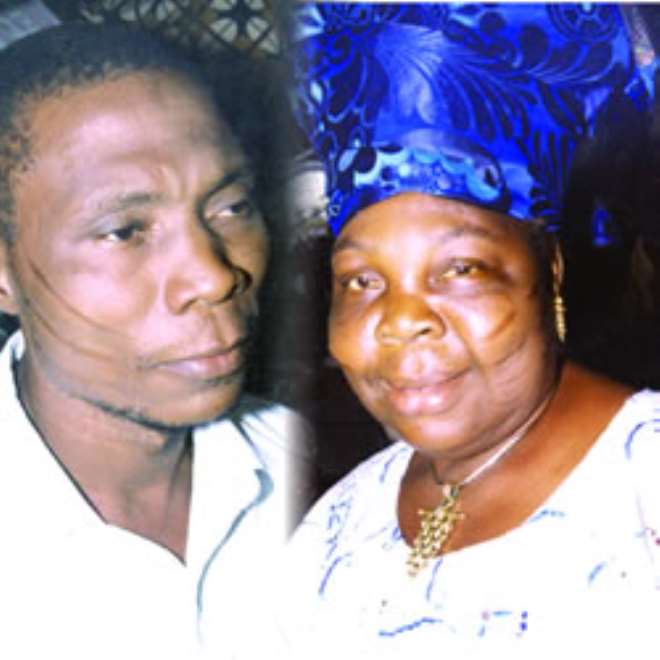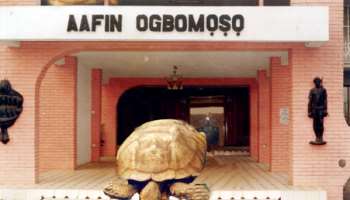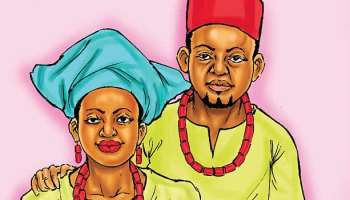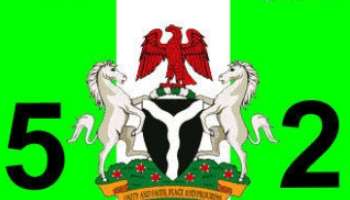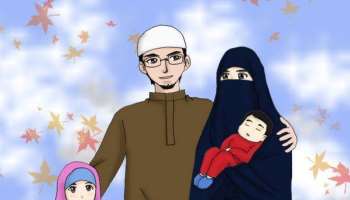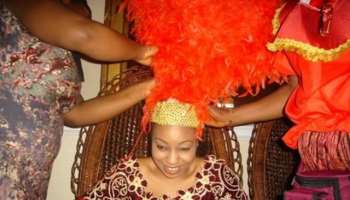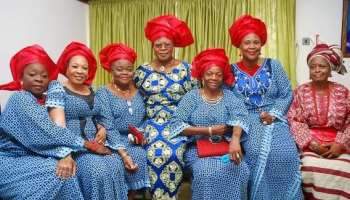Tribal marks? Now, it's the turn of tattoos
THE tradition of African tribal marks dates back to the 14th century and forms part of the rich culture of the black race, most especially in Nigeria. At that point in time, people attached so much importance to tribal scars for various reasons
Tribal marks were a result of religious beliefs passed down from family to family, either as hearsay or just a common societal norm, usually as relating to a particular god or deity.
Similarly, Africans of old viewed tribal marks as a means of proper identification of people from different neighbourhoods. Members of the same village, family tree or lineage had the same tribal marks. The hometown, village and lineage of a child or anyone with tribal marks were quickly known and therefore, outsiders, who did not have such marks, were immediately spotted.
Parents also used tribal marks to lend credence to the legitimacy of their children. Hence, a tribal mark on a child is a way of a father acknowledging that he or she is a legitimate child. Some marks run as parallel grooves from forehead, through the temple and cheek to the chin and are complemented with accessory marks from the medial canthus of the eyes downward. Each ethnic group has its own unique pattern.
For example, vertical marks, one on each cheek, identify Ondo men and women. Three horizontal marks on each cheek reveal the identity of Oyo people. To those literate in markings, a mere glance at someone's face is sufficient to read that person's ethnic group, town, or even family.
However, the ancient custom of tribal marks is fast fading away in the country. In its place, people are now embracing tattoos to either beautify their bodies or for spiritual and other purposes.
Because of the fact that marking is usually done to youngsters, most Nigerians whose faces bear ethnic marks had little choice in the matter. When they become parents, however, they often decide not to give their children facial marks. The pain and risk of infection along with scorn and discrimination the child may face later in life are all factors that make parents reject facial marking. Clearly, the popularity and acceptance of facial marks are waning. Individuals now prefer that their "identity card" should be in the wallets, not on their faces anymore.
Beside, the Nigerian government has moved to outlaw the practice, but many states are yet to approve the law. Some human rights organisations also argued that the scarring of children amount to gross abuse.
However, regardless of their efforts, facial scars are becoming harder to find for different reasons, including the displacement of the old ways by the Western influence.
The upsurge in the transmission of HIV/AIDS, which is believed in the medical circles to be largely contracted through unprotected sexual intercourse and sharing of sharp objects, has gone a long way to play down the custom of tribal marks. This was evident in the resolve of the government to ban genital mutilation, circumcision and other traditional acts that involve the laceration of skin with sharp knives or instruments. Long before the awareness programmes on AIDS, many innocent people, mostly children, who were subjected to tribal marks laceration, had inadvertently been infected with the deadly HIV virus, a development that compelled Osun and Ekiti state governments to recently outlaw the practice of tribal marks and female genital mutilation. Sharp instruments used by the locales to inscribe the tribal marks were not sterilised, thus exposing kids, even adults, to the risk of HIV/AIDS.
While the custom of tribal marks is losing its ground, many individuals, who bear facial markings hold divergent opinions on the merits and demerits of such native identifications.
Reactions of people who interact with them on interpersonal basis somehow dampen their spirit or lower their self esteem.
It is common to hear people refer to an individual as colonel, only to discover that he is not a member of the armed forces, but the stripes on his cheeks are the same number as that of the stripes on the uniform of a colonel in the Army. Some are called tiger, because of their striped cheeks or some are referred to as everlasting tears. Just as the marks and reason for them vary greatly, so do attitudes concerning them. Many wear the marks with pride, considering it as an insignia of patriotism, which makes them feel like true sons of their ancestors while others detest it strongly.
Jimoh Adedoyin, a 65-year -old, who has tribal markings on his face said, "I have never felt bad about my Oyo marks, because they shows that I am a real Yoruba indigene from the town of Alaafin". He further related how in 1967 the marks saved his life during the Nigerian civil war. "The house where I lived was invaded and all other persons were gruesomely killed. The murderers did not touch me because of the marks on my face".
Baring his mind on the benefits and disadvantages of facial tribal marks, Mr Adeleke Ajai, who earned a degree in Psychology at the University of Lagos, remarked thus, "what is a matter of pride for someone with marks on his cheeks, when among his own clansmen, becomes a reproach, because of the ridicule and contempt which is meted out to him in other parts of the country"
On the other hand, Tajudeen Gbolagade expressed regrets over his facial marks. In an interview with the Nigerian Tribune, he said, "I hate it, and I curse the day it was inflicted on me. The marks really disfigure my face and make me feel terrible anytime I look into the mirror. What pains me most is that there is nothing I can do to erase it from my cheeks".
A teenager girl, who pleaded anonymity, praised her mother for not allowing her to be subjected to the operation as a child. She said: "I would have considered suicide if I had been given the marks".
Perhaps the toughest trials are endured in schools by young students, with facial marks. Adejuwon Samuel was the only one in his class with facial marks. He recounted his experience. "In school I was made fun of a lot. My mates would call me 'railway line' and the boy with the railway line. They were always making jest of me and would raise three fingers to indicate the tribal lines on my cheeks. It made feel inferior".
How did he cope with all the bullies? Samuel continued, "One day, the jesting was so intense that I went to my Biology teacher and asked him if it was possible to remove the marks. He told me that it could be done through plastic surgery but that I should not bother because thousands of Nigerians had marks. He said my peers were making fun of me because they were not mature, assuring that when we grewup all the jesting would stop. He also lifted my spirit by saying that the marks did not determine what I really was or what I would become.
"That made me feel much better, and the bad feeling I had regarding the marks disappeared. People seldom refer to my marks now. Even when they do refer to them, I just smile. My relationship with others is not impaired. People respect me because of what I am, not due to the marks I have", Samuel asserted.
The latest vogue in town, which is submerging the hitherto dominance of tribal mark is tattoo. It is a marking made by inserting indelible ink into dermis layer of the skin to change the pigment for artistic, ritualistic or other reasons. Tattoos on humans are a type of decorative modification.
Today, people choose to be tattooed for cosmetic, sentimental and sexual drive. Some individuals also inscribe tattoos on their skins for religious and magical considerations and to symbolise their belonging to or identification with particular groups, including criminal or streets gangs.
A critical look at most of the people wearing tattoos on their bodies, most especially women or ladies indicates that they do it, mainly to attract men.
The primary aim is to lure or seduce men into sexual activities. Towards this end, these tattoos are conspicuously engraved in sexually provocative regions of their bodies such as the breasts and buttocks. Hence, it is a common scene to sight some girls, seating behind commercial motorcyclists as they often display the tattoos on the upper region of their buttocks by wearing skimpy dresses, which expose the tattes to public view.
Fathia Anjola, an undergraduate in one of the universities in the South-West, who also has tattoo on her chest, however, disagreed with the notion that some girls or women tattoo their bodies to attract men. According to her, "I don't believe that most girls with tattoos are all out to woo men.
Personally, my tattoo is done for decoration or what I may term beautification purpose. Therefore, I have no ulterior motive of luring or seducing men with it".
In an interview with the Nigerian Tribune, the Aare Latosa of Yorubaland, Arole Mabinuori Adegboyega, traced the history of tribal marks, particularly in the South- West to the ancestors and forefathers, who had existed in the 14th century. According to him, "there were many people from Oyo, Oke Ogun, Osun, Ekiti and other parts of Yorubaland. Our forefathers now decided to do something distinct that would enable them to recognise their children. That was the genesis of tribal marks. In those days, if you didn't have a facial mark, you were nothing".
He continued, "The traditional set-up was very important at that time. Then, there were criminals in the society. How do you recognise or know where they come from without tribal marks? So the marks went a long to assist our forefathers in proper identification of a specific neighbourhood, ethnic and family lineage that anybody came from", adding that when a child committed an offence or got involved in any vice, the community would not rebuke him, by saying that "we know his roots or where he comes from".
Arole Adegboyega, who is versatile in the Yoruba culture and tradition, observed that individuals from the royal lineage cherish the custom of tribal marks in Nigeria and Africa as a whole, stressing that "you can vividly recognise somebody from Oyo Alaafin or Aaare Latosa family in Oke-Are, Ibadan through his or her facial marks, which are peculiar to their families"
While commenting on the overriding influence of tattoos on the age long tribal marks, he recalled that tattoos originated from Africa, pointing out that "our forefathers had done so much to beautify the body of their children and the Western countries emulated the inscription of tattoos from the African continent".
Arole Adegboyega noted that it was time for the tribal marks to go into oblivion because they had been in practice over a long period of time. "When you are doing something for over 100 years, it will surely fade away. The only thing that is permanent in life is change. The building we are constructing now are different from the ones we had in the ancient times.
"The custom of tribal marks is no longer fashionable. Even, the tattoo that seems to be replacing it are not all that visible because they are mostly hidden or covered by clothes, except those ladies that inscribe it in conspicuous parts of their bodies. What replaces tribal marks today is our behavioural pattern and mode of doing things. Perseverance, good character and patience are virtues that have taken the place of tribal marks in Yoruba land", he explained.
On the need to revive the cultural heritage of tribal marks, the traditionalist said, " I subscribe to the resuscitation of the African culture, but not facial marks. What we can do to replace the tribal marks is for the parents to bring their children up in the right way, with much emphasis on moral uprightness and honesty. Teach them humility, love and respect, such that they can bring glory not only to the family but also to their immediate community and country at large," he said.

Latest News
-
 Division Among Nigerians As Cubana Chief Priest Is
Division Among Nigerians As Cubana Chief Priest Is -
 Cubana Chief Priest Pleads Not Guilty To Charges O
Cubana Chief Priest Pleads Not Guilty To Charges O -
 BBNAIJA Star, Mercy Eke Hospitalized After Partyin
BBNAIJA Star, Mercy Eke Hospitalized After Partyin -
 Regina Daniels Pays Tribute To Late Junior Pope
Regina Daniels Pays Tribute To Late Junior Pope -
 “Internal Bleeding” : Singer Khaid Is Reportedly H
“Internal Bleeding” : Singer Khaid Is Reportedly H -
 Davido Reveals Admiration For Rihanna, Wants To Wo
Davido Reveals Admiration For Rihanna, Wants To Wo -
 Cubana Chief Priest In Hot Waters With EFCC Over
Cubana Chief Priest In Hot Waters With EFCC Over -
 Young John Reveals Reason For Leaving Production F
Young John Reveals Reason For Leaving Production F -
 “The Apology Should Be As Loud As The Disgrace”- D
“The Apology Should Be As Loud As The Disgrace”- D -
 Yul Edochie Throws Shade At Unidentified Person In
Yul Edochie Throws Shade At Unidentified Person In


